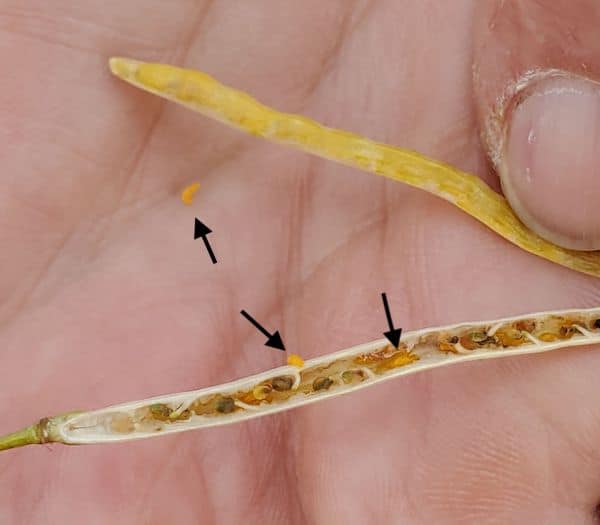Free testing in Manitoba. Members of the Manitoba Canola Growers now have the opportunity to receive free sample testing through the Pest Surveillance Initiative (PSI) lab. The PSI Lab focused originally on the detection of low-level mapping of clubroot in Manitoba, but capabilities of the lab have expanded to include testing and mapping for glyphosate-resistant kochia and most recently testing for blackleg, blackleg race identification and verticillium stripe. For more information, visit https://canolagrowers.com/in-the-lab/psi-lab/.
SaskCanola disease testing. SaskCanola offers free clubroot and blackleg disease testing programs available this fall for registered canola growers in Saskatchewan. Visit https://www.saskcanola.com/production/blackleg.php and https://www.saskcanola.com/production/clubroot.php for more information.
The Harvest Sample Program from the Canadian Grain Commission tracks quality trends in canola and other crops and provides farmers with an unofficial grade and quality report. If new to the program, order your sample kits here: https://grainscanada.gc.ca/application/HSS. Last year’s participants will get a kit in the mail.
Thank you to all provincial pest monitoring staff. Summer is busy for all of us in agriculture and we want to give a special note of thanks to the technicians, scientists and other supporters who are the lifeblood of pest monitoring in Western Canada. Want to learn more? Information about the Prairie Pest Monitoring Network, which publishes prairie insect risk maps, can be found at PrairiePest.ca. The Canadian Plant Disease Survey is published annually by the Canadian Phytopathological Society.
Helpful links for delivery contracts. Many growers have expressed concerns about not being able to deliver on forward-priced delivery contracts. Our national producer group, the Canadian Canola Growers Association (CCGA), has developed resources that can help farmers navigate their contracts: CCGA: What to Consider if Production Comes Up Short on a Deferred Delivery Contract, CCGA: A Practical Guide to Navigate Grain Contracts, CCGA: KnowYourGrade.ca website
Leave check strips in fields sprayed for lygus. Help us harvest valuable information from this challenging year by leaving a check strip in fields that get sprayed for lygus. After sweeping the field, record lygus numbers (threshold is 2-3 mature or late instar nymphs per sweep). The impact of lygus is different in wet and dry conditions, and if we collect enough data from check strips this year, we will have better information the next time a hot, dry, lygus summer occurs. The check strip should be 200-300 m long (or the length of the field) and be situated away from the field margins. Think you can do this or already have? Reach out to Keith Gabert (gabertk@canolacouncil.org) or Autumn Barnes (barnesa@canolacouncil.org) with the Canola Council of Canada.

Canola flower midge. Tiny midge larvae (see photo) have been collected within pods in a few fields in south central Saskatchewan and Alberta. DNA analysis from 2020 identified one of these samples as Contarinia brassicola (canola flower midge). If you find larvae in canola or any other unexpected pest in your canola, collect and preserve them. Then contact your local Canola Council agronomy specialist to assess. Canola flower midge is not considered an economic threat to canola production in Western Canada, but it is closely related to swede midge, a serious pest elsewhere in brassica vegetables, canola and oilseed rape production globally, Research is underway to learn more about this relatively new pest. Learn more about the canola flower midge in the Canola Encyclopedia.
SURVEY: Agroclimate Impact Reporter: Growing Season 2021. Agriculture and Agri-Food Canada is currently collecting information from producers to detail the impacts they are facing due to weather and climate. Please complete this five-minute survey to provide information on the situation in your local area and distribute to others in your network who may have information to share.
Any growers willing to support weed research by getting rid of some cleavers? Breanne Tidemann, a researcher from AAFC Lacombe, is looking for mature cleavers that have (ideally) not been treated with pre-harvest glyphosate along with a corresponding GPS location. This is for her research on cleavers populations, emergence factors impacting cleavers and potential differences between populations in Manitoba, Saskatchewan and Alberta that may affect management strategies. If you can contribute, contact Breanne at breanne.tidemann@agr.gc.ca to confirm sample collection details (number of plants needed, best method of sending, etc.) and mail to: Breanne Tidemann, 6000 C&E Trail, Lacombe, AB, T4L 1W1.
